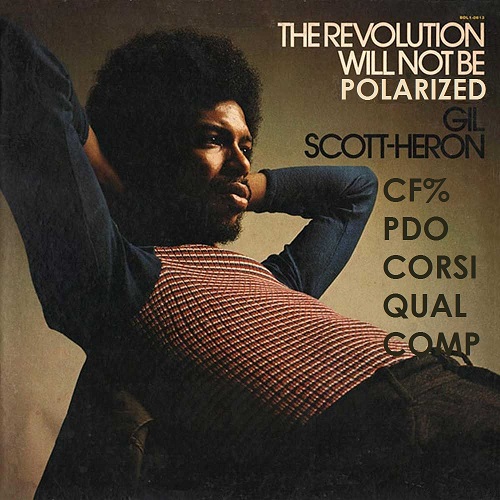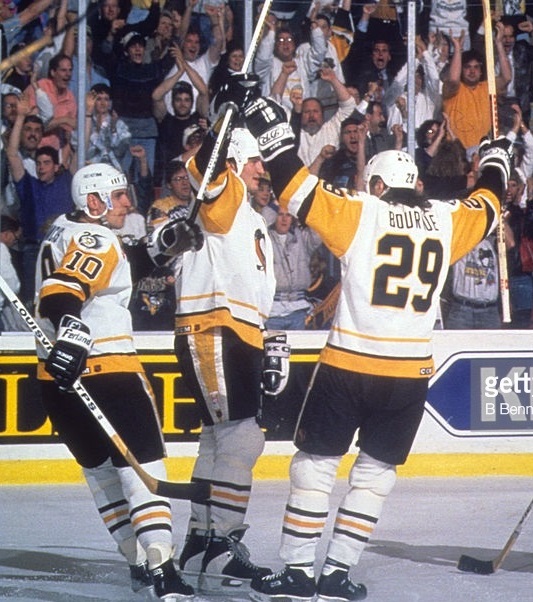
In one camp are the ardent traditionalists such as the always-bellicose Calgary Flames president Brian Burke. When he was invited to speak at the 2012 MIT Sloan Sports Analytics Conference, he pointedly dismissed new data and new stats, upholding hockey’s usual protocols of reliance upon standard statistics and the eye-test by wizened managers, coaches and scouts.
At the other end are hardened analytics proponents. A few years ago, the brash, abrasive Tyler Dellow, ironically like Burke a lawyer by trade, became the lightning rod for the analytics camp. He gained a large following for his presentations of advanced statistics on his personal website but his constant arrogant mocking of the Edmonton Oilers’ decision-making, earned Dellow, and by extension many in the analytics community, a reputation as smug, numbers-only, nerdy know-it-alls.
Thus this wide chasm between hardened analytics supporters and hardened traditionalists seems irreconcilable. Analytics supporters hate traditional narratives based on subjective attribution of “grit, heart and wanting-it-more” to players who win or play well, while traditionalists scoff at how performances that don’t fit the new and innovative data are conveniently dismissed as “random noise”.
Is there any middle ground? Will someone harness best practices from both sides to promote synergistic thinking and progress in hockey?
A few weeks ago, the University of Toronto organized a 90-minute webinar “Engineering Moneyball in Hockey, Baseball and Beyond”. The speaker, Dr. Timothy Chan, demonstrated the practicality of analytics, giving hope that analytics can firmly establish itself better in the hockey mainstream.
Chan is a professor of engineering whose diverse range of research includes sports analytics, cardiology and environmental sustainability. (Four days before the webinar, a news story indicated he proposes a drone network to rapidly bring defibrillators to people who are having heart attacks).

He opened by dismissing the notion that Moneyball or analytics is just “advanced or fancy statistics but models, in particular, decision models that analyze data and try to turn that data into a prescription for action” giving insight and possible answers to the sports or hockey question being studied.
To illustrate, he asked a question every NHL GM has asked since hockey was invented: “How do we value different players?” Using, non-fancy 2013-14 statistics (e.g. goals, assists, +/-, hits, blocks, etc.), Chan and his researchers constructed a simple model with players grouped together by common characteristics (e.g. top-line forwards, grinders, offensive-minded defensemen).
Unsurprisingly, Sidney Crosby and Steven Stamkos were in the same tier of top-line forwards. However, one grouping that caught my eye was the “average defensemen” category. There, one of the Penguins’ most improved blueliners this season, Justin Schultz, was grouped with Christian Ehrhoff and Seth Jones. Keep in mind that this was based on data from three seasons ago. One wonders if Edmonton would have assessed and deployed Schultz differently earlier in his career as an Oiler had they known an objective analytic model placed him on the same tier as Jones, who received Calder Trophy votes that season (and was later traded for top-line forward Ryan Johansen) and Ehrhoff, a steady, productive veteran who had already played over 700 NHL games.
By no means does this imply the Oilers traded Norris Trophy material to the Penguins for a third-round draft choice. Analytics in this case gives us a system to evaluate players objectively, revealing players who might be serviceable but are buried on bad teams. Analytics also tells us immediately following Saturday night’s loss in Toronto that Schultz is exposed in a top-pairing role due to injuries to Kris Letang and Trevor Daley, but at full team health, Schultz is perfectly suited to be a mid-level defender. (h/t to co-worker Leah M. Blasko for finding this chart).
PIT-TOR: Justin Schultz is not a No. 1 defenseman and it showed. pic.twitter.com/1UFis0cuh6
— Muneeb Alam (@muneebalamcu) December 18, 2016
In the webinar, Chan also presented some of his baseball analytics research that could have implications for hockey. He showed how Joe Maddon, former Tampa Bay Rays’ manager, would often radically realign his defense with multiple players and positional changes when a starter left the game due to injury instead of performing a straight one-for-one substitution. Chan quantified the added value to teams with players who are versatile enough to play multiple positions at or above a league-average level.
The low-budget, analytically-minded Rays made multiple postseason appearances with Maddon at the helm and of course, this year, he guided Chicago to the World Series title. (Analytics also revolutionized our low-budget local professional ballclub earlier this decade).

Furthermore, think of this past week. What if there was a theoretical member (“Player X”) of the Penguins current forward corps who could play defense at a statistically-measurable NHL-average level? When Letang and Daley were sidelined with injuries, what if instead of re-calling a below-average, work-in-progress AHL blueliner like Derrick Pouliot, the Penguins slid Player X onto a defense pairing and re-called talented center Jake Guentzel? There would likely be a net increase in value to the Penguins roster from this type of positional flexibility relative to the standard re-call of the next best replacement-level player at the same position as the injured player.
Chan concluded his talk by reiterating what analytics is and isn’t. “Think broadly about sports analytics, complex models and non-traditional data … but also think deeply about analytics. It’s not enough to do number crunching … the best decision making is combining both.”
As critics always point out, hockey is not played out on a spreadsheet or computer. The countless human factors remain just as important in any hockey-related decision. However, any quantifiable or measurable innovation, statistic or model that could uncover undervalued players or skill sets and importantly, could lead to greater production relative to salary, only helps to improve the foundation of those decisions.
That is where the strength of analytics lies.
Add The Sports Daily to your Google News Feed!
